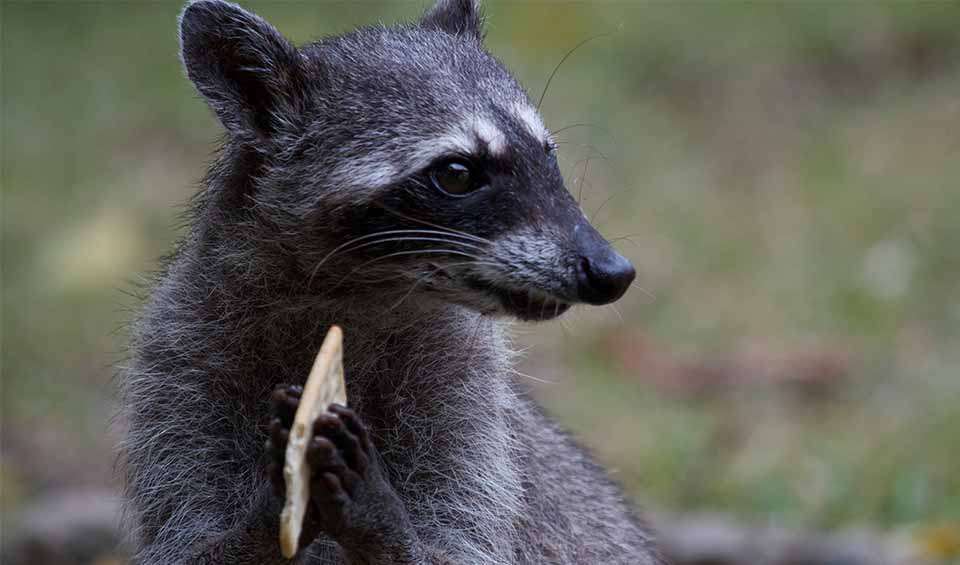Procyon – Raccoons
The Common raccoon has adapted to urban life, while the two other species live in jungles
These medium-sized mammals, with their distinctive black-masked faces and ringed, bushy tails, have captivated human interest for centuries. They exhibit a bear-like appearance but are much smaller in size, with a robust body, nimble black paws equipped with five toes, and dexterous hands that are almost human-like in their ability to manipulate and explore their environment.
Raccoons possess several physical adaptations that facilitate their versatile lifestyle. Their highly sensitive and flexible paws allow them to grip, hold, and tear objects apart, aiding in foraging and climbing. Indeed, raccoons are excellent climbers and can descend trees headfirst or backward, thanks to their hind feet’s ability to rotate 180 degrees, providing a secure grip on the tree trunk.
Contrary to the common perception of raccoons as solitary creatures, recent observations suggest that their social behavior may be more complex and vary with environmental conditions. While males may form small, loose associations, females often share denning sites during the winter for warmth and protection. Raccoons inhabit a wide range of environments, from rural to urban areas, showcasing remarkable adaptability. They prefer wooded areas with access to water, which provides them with a rich food source, but they have also thrived in urban settings where their intelligence and dexterity enable them to navigate human environments successfully.
As omnivores, raccoons have a highly varied diet influenced by their habitat. In natural settings, their diet primarily consists of fruits, nuts, seeds, insects, frogs, eggs, and crayfish. However, in urban and suburban areas, raccoons are known to scavenge garbage and pet food, demonstrating their opportunistic feeding habits. Their notorious practice of “washing” their food, although not a necessity, illustrates their tendency to use water to enhance tactile sensations and remove unwanted parts from their food.
Species in this genus
Cozumel raccoon
Much smaller than the raccoons you might see in other places, and it has some unique looks
Crab-eating raccoon
Despite the common name, they do not feed on crabs exclusively
Raccoon
‘Raccoon’ comes from ‘arakun’ meaning ‘he scratches with hands’ in Algonquin Indian




